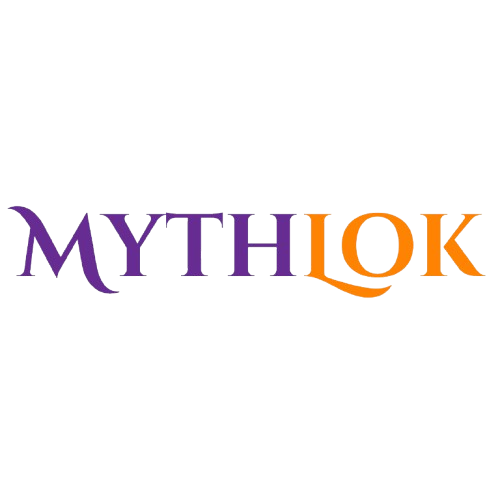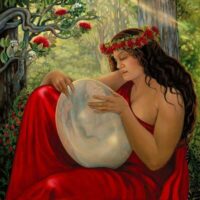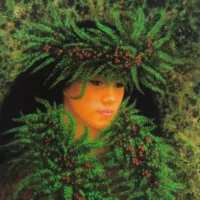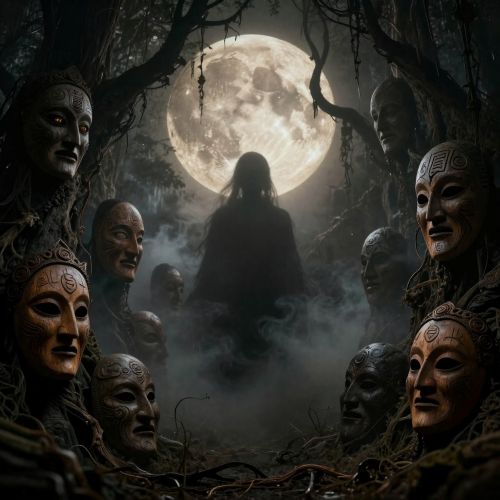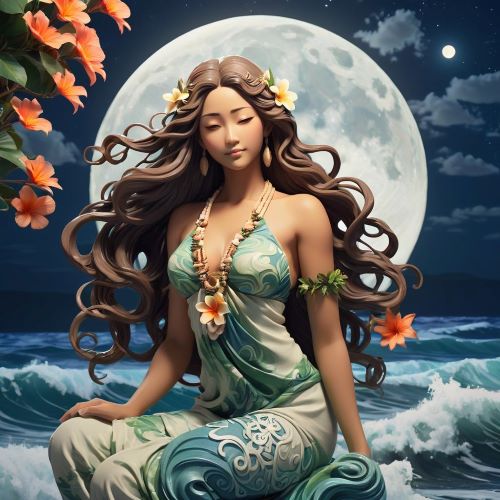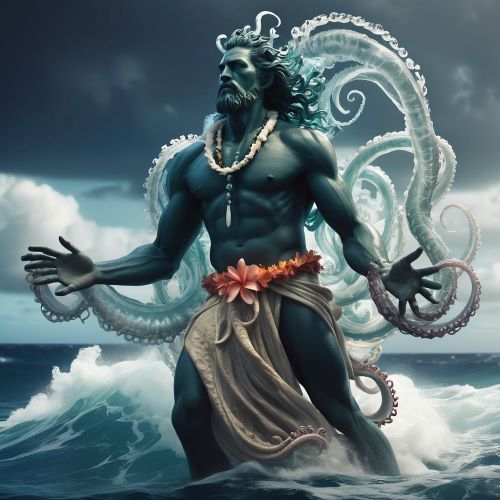Hiʻiaka : Goddess of Healing
Listen
At a glance
| Description | |
|---|---|
| Origin | Hawaiian Mythology |
| Classification | Gods |
| Family Members | Haumea (Mother), Kane (Father), Pele (Sister) |
| Region | Hawaii Islands |
| Associated With | Hula, Healing |
Hi’laka
Introduction
Hiʻiaka, a central figure in Hawaiian mythology, is more than just a supporting character. As the cherished younger sister of Pele, the fiery volcano goddess, Hiʻiaka embodies a captivating blend of strength, gentleness, and nurturing power. Her story is intricately woven into the fabric of Hawaiian culture, making her a revered figure among dancers, healers, and nature enthusiasts. Known as the patron goddess of hula dancers, chant, sorcery, and medicine, Hiʻiaka was born in Tahiti and brought to Hawaii by Pele. She played a crucial role in the story of Lohi’au, embarking on a perilous journey to bring him to Pele. Hiʻiaka’s tales, reflecting her loyalty, bravery, and divine powers, are deeply intertwined with Hawaii’s volcanic landscapes, serving as cultural cornerstones that mirror the values, beliefs, and natural phenomena of the Hawaiian people.
Physical Traits
Descriptions of Hiʻiaka’s physical form are scarce, with traditional narratives focusing more on her actions and virtues. Some interpretations, however, depict her as a youthful and radiant woman, embodying the lush greenery and vibrant flora of the fertile volcanic regions nurtured by Pele. Owls, associated with wisdom and the nocturnal realm, are often linked to Hiʻiaka, suggesting her connection to the unseen and spiritual realms. Hiʻiaka is frequently portrayed as a beautiful young woman, embodying the grace and vitality of nature. Her appearance is described as captivating and serene, reflecting her bond with the lush Hawaiian forests and the ocean. Often adorned with garlands of lehua blossoms, a flower sacred to her, Hiʻiaka symbolizes love, fertility, and hula.
Family
Hiʻiaka, the daughter of Haumea and Kāne Milohai, was conceived in Tahiti and carried as an egg to Hawaiʻi by her sister Pele. The name “Hiʻiaka” reflects this journey, with “hiʻi” meaning to hold or carry in the arms and “aka” meaning “embryo.” Her family is central to her mythology, shaping her character and adventures. Hiʻiaka is the youngest sister of Pele, the tempestuous volcano goddess. Their mother, Haumea, is a powerful earth goddess, while their father, Kāne Milohai, is linked to creation. Hiʻiaka’s numerous sisters each have unique roles, but her bond with Pele is the most significant. Despite Pele’s volatile nature, Hiʻiaka remains fiercely loyal to her. This loyalty is most famously depicted in her epic journey to retrieve Pele’s lover, Lohiʻau, from Kauaʻi. This quest tests Hiʻiaka’s courage, compassion, and resilience, highlighting her dedication to family and duty.
Other names
Hiʻiaka’s full name, Hiʻiakaikapoliopele, translates to “Hiʻiaka in the bosom of Pele,” underscoring the inseparable bond between the sisters. She is also referred to as Hiʻiakaikapele, meaning “Hiʻiaka of Pele,” and Hiʻiaka of the Forests, reflecting her connection to the lush landscapes nurtured by volcanic activity. Additionally, she is known as Hiʻiaka-i-ka-pua-ʻenaʻena, which means “Hiʻiaka in the burning flower,” highlighting her association with the lehua blossom and its ties to love and volcanic fire. Each of these names captures different aspects of Hiʻiaka’s identity, from her close familial bonds and natural domain to her divine attributes, showcasing her multifaceted significance in Hawaiian culture.
Powers and Abilities
Hiʻiaka’s influence spans ancient myths and contemporary Hawaiian culture alike. She discovered her powers as a healer of the land, fostering fertility and growth, while also triumphing over numerous monsters and challenges with aid from companions and gifts from Pele. Known as a goddess of hula, alongside her sisters Laka and Kapo, Hiʻiaka holds a significant place in hula tradition. This traditional dance form not only honors her but also serves as a medium for storytelling, conveying history, emotions, and reverence for nature. Hiʻiaka’s grace and connection to the natural world are believed to have inspired the art of hula and the rhythmic chants that accompany it.
Beyond her role in the arts, Hiʻiaka is revered as a powerful healer and protector. Legends depict her restoring health to the land and its inhabitants, symbolizing her nurturing and protective qualities. Her association with the lehua blossom, sacred in Hawaiian culture, underscores her role as a symbol of love and resilience. Efforts to conserve native Hawaiian flora often invoke Hiʻiaka’s protective spirit, highlighting her enduring legacy as a guardian of nature.
In contemporary literature, plays, and films, Hiʻiaka’s stories continue to inspire exploration of themes such as loyalty, bravery, and the interconnectedness of humans and nature. Her epic journey to retrieve Lohiʻau from Kauaʻi remains a popular narrative, each retelling emphasizing different facets of her character and cultural significance. In modern spiritual practices, Hiʻiaka is venerated for her healing powers and invoked for blessings of health, fertility, and guidance, demonstrating her ongoing relevance and revered status in Hawaiian spirituality.
Modern Day Influence
Hiʻiaka’s influence permeates contemporary Hawaiian culture and arts, remaining a prominent figure in hula with dances and chants dedicated to her story and attributes. Hula practitioners invoke her spirit to infuse performances with mana, maintaining a living connection to cultural heritage. In literature, plays, and films, Hiʻiaka’s stories explore themes of loyalty, bravery, and the human-nature interplay, with each adaptation highlighting different aspects of her character. Her presence extends to Hawaii’s natural world, where the lehua blossom, sacred to her, symbolizes love and resilience, inspiring efforts to preserve native flora and fauna.
Modern spiritual practices venerate Hiʻiaka as a goddess of healing and protection, with many offering prayers for health, fertility, and guidance. Her enduring legacy reflects deep reverence among the Hawaiian people. Today, Hiʻiaka’s influence is evident in hula’s cultural expression and environmental advocacy, with healers drawing inspiration from her nurturing nature. The owl, her messenger, symbolizes wisdom and the unseen, reinforcing her spiritual significance. Hiʻiaka’s story continues to inspire dancers, musicians, and storytellers, resonating through ceremonies in hula hālau and popular retellings of her epic journey to retrieve Lohi’au, showcasing her bravery and enduring devotion to Pele. Her tale of loyalty and resilience offers hope and inspiration to those facing personal challenges, illustrating her timeless relevance in both myth and contemporary life.
Related Images
Frequently Asked Questions
What is lorem Ipsum?
I am text block. Click edit button to change this text. Lorem ipsum dolor sit amet, consectetur adipiscing elit. Ut elit tellus, luctus nec ullamcorper mattis, pulvinar dapibus leo.
What is lorem Ipsum?
I am text block. Click edit button to change this text. Lorem ipsum dolor sit amet, consectetur adipiscing elit. Ut elit tellus, luctus nec ullamcorper mattis, pulvinar dapibus leo.
What is lorem Ipsum?
I am text block. Click edit button to change this text. Lorem ipsum dolor sit amet, consectetur adipiscing elit. Ut elit tellus, luctus nec ullamcorper mattis, pulvinar dapibus leo.
What is lorem Ipsum?
I am text block. Click edit button to change this text. Lorem ipsum dolor sit amet, consectetur adipiscing elit. Ut elit tellus, luctus nec ullamcorper mattis, pulvinar dapibus leo.
What is lorem Ipsum?
I am text block. Click edit button to change this text. Lorem ipsum dolor sit amet, consectetur adipiscing elit. Ut elit tellus, luctus nec ullamcorper mattis, pulvinar dapibus leo.

